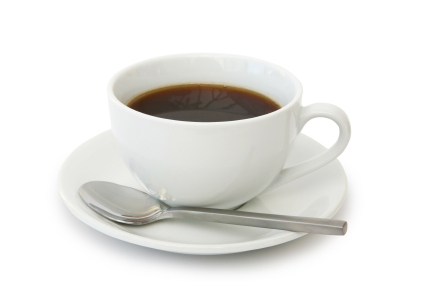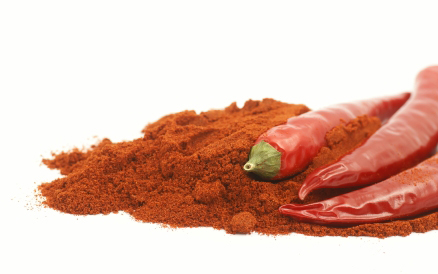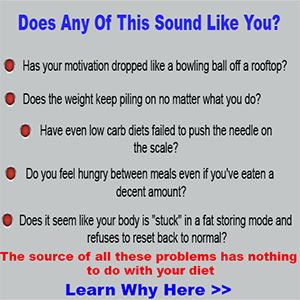EXCLUSIVE REPORT:
REAL Slimming Secrets from the Supermarket:
Part 2
In part 1 of this series we revealed four slimming secrets available from your supermarket -coffee, hot red pepper, cinnamon and green tea- and their calorie-burning effects. Along the way, we learned that increasing your calorie-burning rate is the first step towards achieving negative fat balance, a metabolic state of affairs in which your body is burning more fat than it’s storing, and without which, fat loss is impossible. In this report we discuss how practical it actually is to use the “Top Four” to help you get you into negative fat balance and see the fat pounds come off.
Coffee
Studies have made it fairly clear that taking caffeine can increase your calorie-burning rate. But can drinking coffee have the same effect? For help in answering this question, we reached out to Dr. Abdul Dulloo (Ph.D.), a lecturer and research fellow in the Department of Medicine and Physiology at the University of Fribourg in Switzerland. He states1 “There have been a couple of studies that have compared coffee with its equivalent in caffeine on metabolic rate. No differences have been found, suggesting that the thermogenic effect of coffee (as assessed at rest) is explained essentially by its caffeine content.”

Dulloo’s own studies suggest, however, that one cup may not be enough to produce fat loss, even if repeated long term. Recall from part 1 that when he and his colleagues2 gave subjects a single 100-mg dose of caffeine (equivalent to ~1.2 cups of coffee), their calorie-burning rate rose up to 4% for 2.5 hours. Anything less than 100 mg, the scientists felt, was unlikely to produce a demonstrable thermogenic effect. *
Let’s put these numbers into perspective. For the sake of example, assume that at rest you normally burn 1500 Calories a day. This is your resting metabolic rate. Thus, a 4% increase sustained over 2.5 hours equates to burning an additional 6.25 Calories, roughly the caloric content of a tablespoon of nonfat milk. Not impressed? You’re shouldn’t be.
In the same study, Dulloo and his colleagues tried stepping things up by giving subjects 100 mg of caffeine every 2 hours for 12 hours (600 mg total). The result? Their calorie-burning rate increased 8-11% over the same time frame. Continuing with our example, this would equate to burning an extra 60-83 Calories a day, or about half a glass of Merlot. While this is considerably more impressive, remember that 600 mg of caffeine corresponds to about 7 cups of coffee.
Even if you have a coffee habit like Hugo Chavez, some scientists suggest that you might not experience the same effects as you would by taking the equivalent amount of caffeine. Nishijima et al.3 relate:
“It needs to be pointed out that the common belief that caffeine and coffee consumption might have very similar physiological effects is not the case. Graham et al. (1998) have shown that the same dose of caffeine, either ingested in a capsule as in the present study, or in coffee resulted in different plasma adrenaline concentrations, i.e. being significantly higher after taking the caffeine capsules. These findings suggest that one cannot extrapolate the effects of caffeine to coffee; there must be something in coffee that moderates the effects of caffeine.”
Whether coffee can produce the same calorie-burning effect as has been repeatedly demonstrated for caffeine or not, it’s safe to say that many of us would prefer not to consume large quantities of either. The more practical, if not effective, approach may be to consume enough pure caffeine to provide a modest calorie-burning boost in combination with other ingredients that can safely elevate it further –a “team” approach, if you will. After all, if you were to burn an extra 83 Calories a day and do nothing else, it would take nearly a month and a half to lose one pound of body fat. Double this figure, however, and it would take only 20 days.
*[NOTE: Individual responses to caffeine can vary markedly. Also, more recent studies have found that doses less than 100 mg can produce modest thermogenic effects. For instance, in a double-blind study, Belza et al.4 gave young normal-weight men 50 mg of caffeine. Over the next 4 hours they burned roughly 17 more Calories (a 6% increase) than subjects taking a placebo.]
Hot Red Pepper
One of the ingredients to consider combining with caffeine is capsaicin, the compound responsible for the painful punch of hot red peppers. While it may not be at the top of your grocery list, it’s possible to consume enough of capsaicin from your diet to raise your calorie-burning rate, says Dr. Toshio Moritani (Ph.D.)5, a professor and director of the Laboratory of Applied Physiology at Kyoto University in Japan. He suggests adding chili pepper to curried rice.
Moritani and his colleagues have reported on the calorie-burning effects of capsaicin in several studies, one of which we discussed in part 1. In it, female subjects who received a curried rice meal containing 3 mg of capsaicin experienced a 10% increase in their calorie-burning rate. While this would equate to burning an additional 129 Calories a day if the effect were sustained for 24 hours, it was only measured for 30 minutes. Moritani relates “the expected increase in energy metabolism [calorie burning] is rather minimal such that only 10 to 20 Calories might be generated. It will take a year to lose 1 kg [2.2 lb] of body fat!”

Dr. Anita Belza, an assistant professor in the Department of Nutrition at the University of Copenhagen, concurs6:
“The capsaicin concentration varies widely in the different chili fruits (0-13 mg/kg). Studies have been able to serve a palatable test meal with approximately 30 g of red pepper (3 mg capsaicin/g red pepper –Yoshiioka et al., Br J Nutr, 2001) to Western subjects 3 times a day. However, we have only worked with capsaicin in tablet form and in lower dosage but probably a more pure form. I think it will probably be quite difficult for a Western population to eat a dosage of capsaicin from food items to obtain a fat-reducing effect.”
As with caffeine, what Drs. Moritani and Belza are suggesting, in other words, is that you may need to consume larger amounts of capsaicin throughout the day before you see fat loss, amounts that may be intolerably difficult to obtain by adding hot red pepper to your meals. Like many things in life, these larger amounts bring with them a greater risk of undesirable side effects. Dr. Jose Galgani (Ph.D.), an assistant professor in the Department of Nutrition at the University of Chile, says7 that subjects have been known to drop out of capsaicin studies because of its pungency. In large quantities it can cause stomach discomfort.
Once again the more sensible approach may be to consume enough capsaicin to achieve a modest calorie-burning effect in combination with other natural ingredients capable of doing the same.
The good news is that although capsaicin appears to work by stimulating the sympathetic nervous system, it doesn’t produce the undesirable side effects associated with sympathetic stimulants such as ephedrine. Dr. Moritani explains5:
“With the amount of capsaicin commonly taken as part of diet, no adverse effects on sympathetic overreaction nor ECG [cardiac] abnormality have been reported. Actually menopausal women with depressed autonomic nervous system could enhance sympatho-vagal functions and might be able to prevent obesity. [Low sympathetic nervous system activity has been suggested to be a risk factor for future weight gain and obesity.] Incidentally, caffeine could increase both sympathetic and parasympathetic activities without any adverse effects on cardiac functions.”
The “Team Approach”
The studies discussed in parts 1 and 2 of this series of reports provide powerful evidence that certain key ingredients in coffee, hot red pepper, and a few other key nutrients have valuable calorie-burning effects. In order to experience fat loss, however, you may need to consume fairly large quantities of any single ingredient. How many of us are willing to add hot red peppers to every meal followed by a chaser of 2-4 cups of coffee? In the final report in this series we’ll discuss a much more palatable and convenient solution that you won’t want to miss.
If you haven't already read Slimming Supermarket Secrets part 1 then click here
SCIENTIFIC EVIDENCE
1. Dulloo (2010). Personal communication.
2. Dulloo et al. (1989). Am J Clin Nutr 49:44.
3. Nishijima et al. (2002). Eur J Appl Physiol, 87: 475.
4. Belza et al. (2009). Eur J Clin Nutr, 63: 57.
5. Moritani (2010). Personal communication.
6. Belza (2010). Personal communication.
7. Galgani (2010). Personal communication.
8. Anderson (2010). Personal communication.
9. Blannin (2010). Personal communication.
10. Grove and Lambert (2010). J Nutr 140(3): 446.
11. Dulloo et al. (1999). Am J Clin Nutr 70: 1040.
12. Chen et al. (2001). J Agric Food Chem, 49: 477.
About Jayson Hunter & Jaylab Pro

Jaylab Pro was founded by Registered Dietitian Jayson Hunter. Jayson has been recognized as one of America's foremost weight loss experts by America's Premier Experts™. He has also been featured in USA Today for this accomplishment. Jayson is also a best-selling author having co-authored multiple books in health & fitness and business growth. Jayson and the Jaylab Pro team are proud to create content that helps improve the lives of millions of people around the world. We hope you enjoy it just as much as others have.
 If you order a JayLabPro SmartShip product or any Combo Package, we will automatically ship you a new supply of the product or products you have ordered every month, starting 30 days after your initial order is shipped, and continuing until you cancel. The credit card you are using today will be billed the lowest available price for those product or products when your order is shipped, but shipping will be FREE. You may log into your customer account or call our customer service department toll-free at 1-888-9GETPRO (1-888-943-8776) between the hours of 8am – 9pm EST Mon-Fri to cancel future shipments, customize the timing of your shipments, or change the credit card used for billing.
If you order a JayLabPro SmartShip product or any Combo Package, we will automatically ship you a new supply of the product or products you have ordered every month, starting 30 days after your initial order is shipped, and continuing until you cancel. The credit card you are using today will be billed the lowest available price for those product or products when your order is shipped, but shipping will be FREE. You may log into your customer account or call our customer service department toll-free at 1-888-9GETPRO (1-888-943-8776) between the hours of 8am – 9pm EST Mon-Fri to cancel future shipments, customize the timing of your shipments, or change the credit card used for billing.









